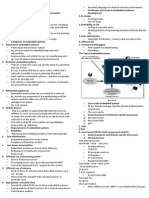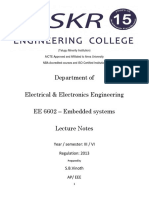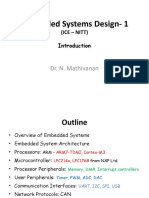0% found this document useful (0 votes)
27 views5 pagesCALABPROCESSORS
The document discusses various computer architectures and specialized processors. It provides overviews and key features of PIC18, Atmel, IBM Power2, Itanium, EPIC, Intel i860, Transmeta Crusoe, StarCore, TigerSHARC, and Infineon architectures. It also lists examples of embedded systems and describes the processor cores and architectures of a Lenovo PC and Samsung mobile phone.
Uploaded by
Layba Huda ShahidCopyright
© © All Rights Reserved
We take content rights seriously. If you suspect this is your content, claim it here.
Available Formats
Download as DOCX, PDF, TXT or read online on Scribd
0% found this document useful (0 votes)
27 views5 pagesCALABPROCESSORS
The document discusses various computer architectures and specialized processors. It provides overviews and key features of PIC18, Atmel, IBM Power2, Itanium, EPIC, Intel i860, Transmeta Crusoe, StarCore, TigerSHARC, and Infineon architectures. It also lists examples of embedded systems and describes the processor cores and architectures of a Lenovo PC and Samsung mobile phone.
Uploaded by
Layba Huda ShahidCopyright
© © All Rights Reserved
We take content rights seriously. If you suspect this is your content, claim it here.
Available Formats
Download as DOCX, PDF, TXT or read online on Scribd
/ 5





















































































